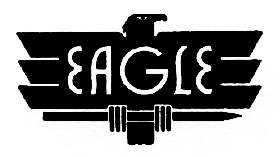A. N. Palmer Anpaco Fountain Pen c. 1945-1949
by Jim Mamoulides, November 22, 2024
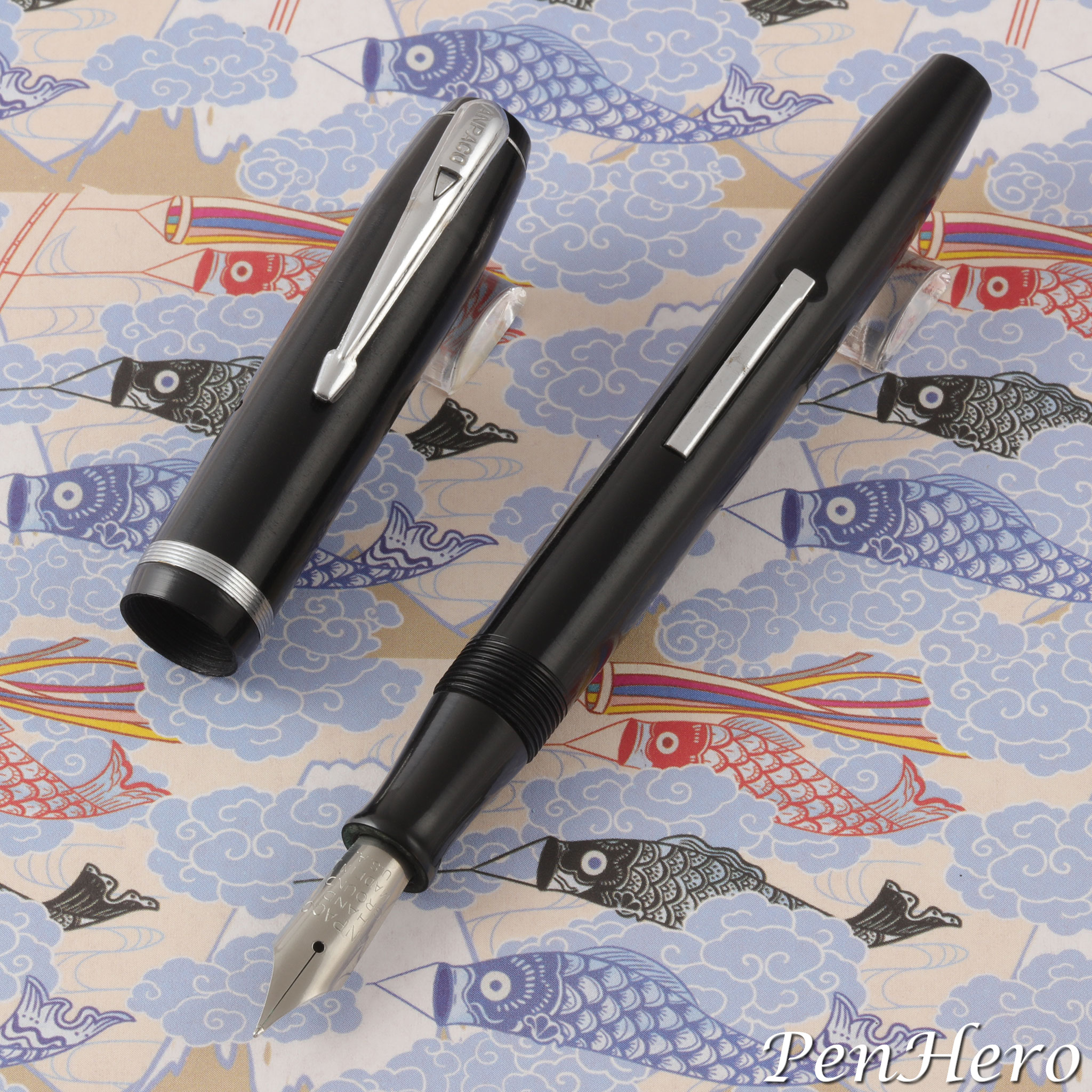 A. N. Palmer Anpaco fountain pen c. 1945-1949
A. N. Palmer Anpaco fountain pen c. 1945-1949
Talk about a needle in a haystack!!!
Many times, the most puzzling pens come from my trips to antique stores. Like many other such finds, this one took quite a while to figure out. There was something familiar about the pen, but it had no obvious clues other than ANPACO stamped on the clip and nib. What exactly is an "Anpaco?" I did a lot of fruitless Google searches on “ANPACO.” There’s a quite a few of uses of the name, especially as an acronym: “Anpaco” packing from the Anchor Packing Company of Philadelphia, Pennsylvania, Anpaco Container Corporation in Chicago, Illinois, Association Nationale des Patients Atteints de Cancers de l'Oeil in France, and ANPACO SRL, a wholesaler in Italy, and there are several others. None would have any likely association with this black and silver pen. And then I stumbled over a hit in a Google Books search. There are three separate entries in the Federal Register in 1945, on February 27, May 10, and June 6, reporting what manufacturers reported to the U. S. government their maximum pricing for specific products. In the listing for the Eagle Pencil Company, a Palmer Method fountain pen, model 5200 and called Anpaco, has a retail ceiling price of $2.41. Aha! A N PAlmer COmpany. Now I remember what is familiar about it.
This 5 1/8 inch long black plastic Anpaco branded fountain pen was made by the Eagle Pencil Company c. 1945-1948 as an OEM product for the A. N. Palmer Company rather than as an Eagle sub-brand like EPENCO. It features Eagle’s 1935 patented "Visehold" clip, designed by Benjamin W. Hanle, with ANPACO stamped at the top. The clip, cap band, and lever appear to be polished stainless steel. The stainless steel nib is stamped ANPACO over HAND over GROUND over MADE IN over U.S.A. There are no other markings on the pen. It was based on an existing Eagle model offered at the same time at a lower price of $1.00. That pen came in black, blue, grey, maroon and aquamarine. Similar pens can be found in late 1940s advertisements.
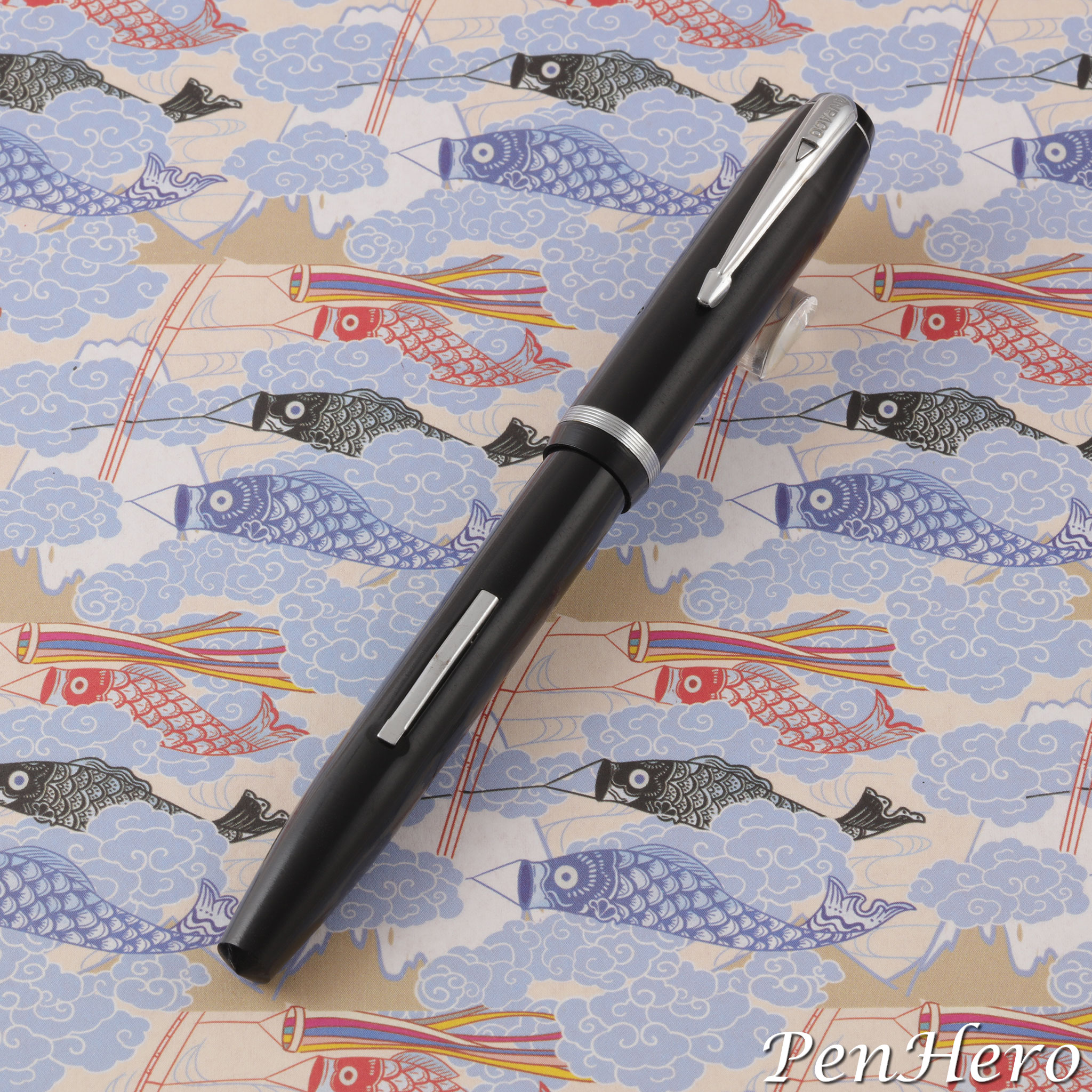 A. N. Palmer Anpaco fountain pen c. 1945-1949
A. N. Palmer Anpaco fountain pen c. 1945-1949
I should have realized that the clip design was a dead giveaway that this was an Eagle made pen. Benjamin W. Hanle was awarded U. S. Patent 2,022,416 on November 26, 1935 for the visually distinctive "Visehold" patented clip design. The patent drawing shows an arrowhead style design and is derived from a patented two-piece washer clip. The washer element of the clip has a triangular shaped tab that inserts into a slot on the clip itself, locking in with the triangle's tip into a triangular shaped slot on the face of the clip, giving the impression of an inlay on the clip face. It appears on many Eagle pens including the c. 1939 Eagle Prestige.
I was only able to find one advertisement for Anpaco pens, placed by a retailer in the June 7, 1945 Elizabethtown, Illinois Hardin County Independent. The ad describes the pen as a $3.00 value Anpaco DeLuxe Pen for $2.41, which was the maximum price Eagle set for the pen with the Federal Government.
What is the Palmer Method?
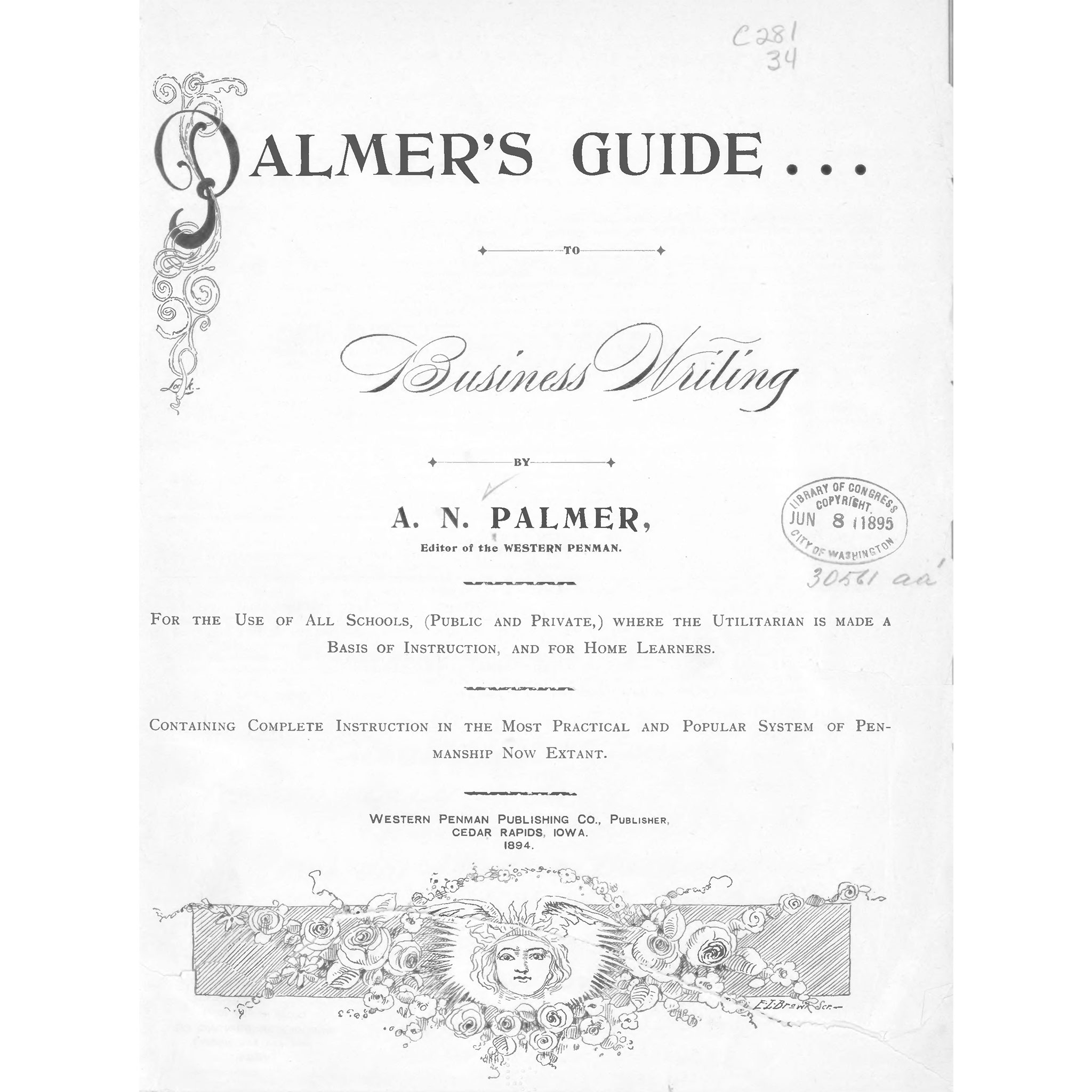 Palmer's Guide To Business Writing, first page from 1894 edition
Palmer's Guide To Business Writing, first page from 1894 edition
Austin Norman Palmer, born December 22, 1860 and died November 16, 1927, developed a penmanship method that was intended to simplify and speed up the earlier Spencerian method, which was a leading handwriting learning system from the 1840s. Palmer developed his method in the late 1880s and self-published the first edition in 1894. He called his technique “Muscular Movement Writing,” where the arm was used more than the fingers in the writing motion. The objective was to write with more speed than the Spencerian method, still forming words with clarity, and it requires some discipline to master. How this pen specifically assists writers with the Palmer Method is not clear to me and I did not find any information that ties that off. Palmer’s company survived until the 1980s. Cursive writing has fallen into general disuse in the United States, especially since the recent introduction of Common Core standards for English that did not include cursive handwriting instruction.
Identification Guide and Features:
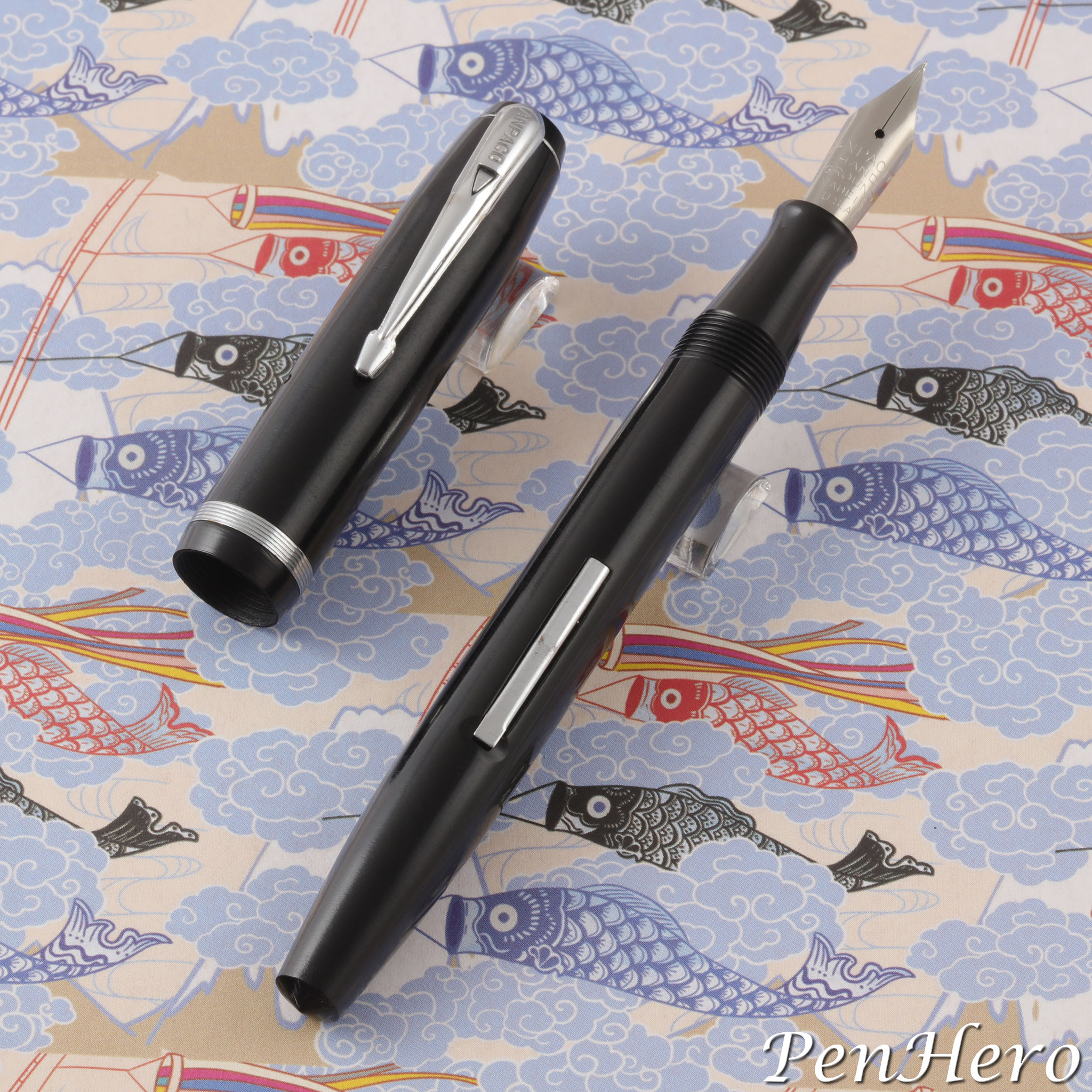 A. N. Palmer Anpaco fountain pen c. 1945-1949
A. N. Palmer Anpaco fountain pen c. 1945-1949
This is a specialty OEM version of one of the Eagle fountain models made in the late 1940s. The Eagle branded pens came in a variety of colors, with gold plated trim, and stainless steel nibs. This pen was probably only made in black and likely had no matching pencil as its purpose was specific to the Palmer Method and branded for the Palmer Company. The emphasis on "hand ground" stamped on the nib indicates that it was likely a special nib grind for the Palmer Method, and would account for the higher price for these pens over the standard Eagle pen with a stainless steel nib.
- Solid black plastic cap and barrel
- Black plastic nib section
- Polished stainless steel clip stamped ANPACO near the top
- Polished stainless steel lever and cap band
- Cap band has concentric ridges
- Lever filler
- Threaded cap
- Stainless steel nib stamped ANPACO over HAND over GROUND over MADE IN over U.S.A.
- Likely only sold with Palmer Method nib grind
- About 5 1/4 inches long capped and 6 1/16 inches posted
- Retail price for the fountain pen was $2.41
- Pen packaging unknown
- May not have had a matching pencil - any same model Eagle pencil would match
Performance
This black plastic Anpaco branded pen is a standard size, about 5 1/4 inches long capped and 6 1/16 inches posted. It's lightweight and long enough to be used without posting the cap on the end of the barrel, so I left it off for the writing test.
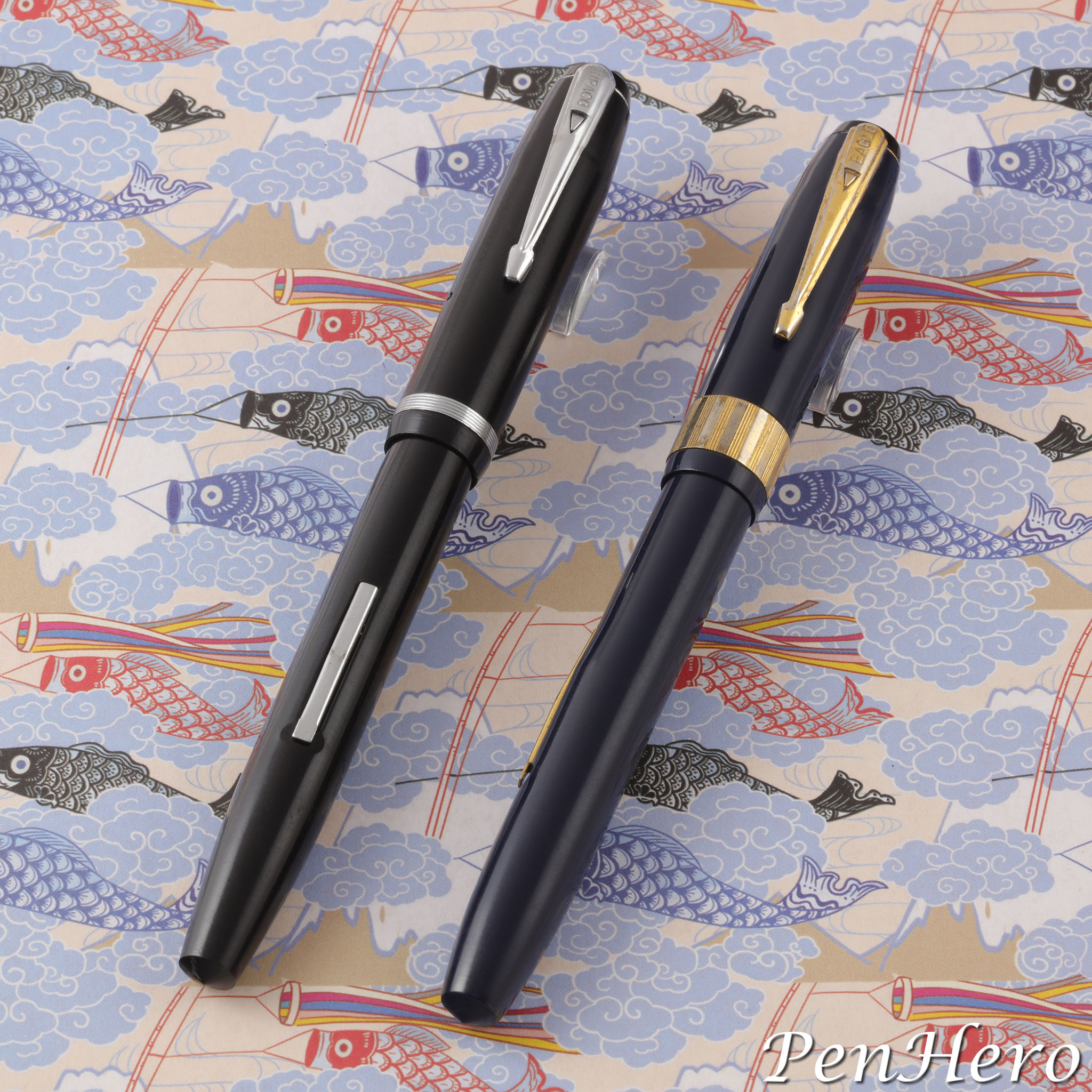 A. N. Palmer Anpaco fountain pen with similar Eagle fountain pen from the same period
A. N. Palmer Anpaco fountain pen with similar Eagle fountain pen from the same period
Since the pen had a good sac, I filled it for the writing test. It fills like any other lever filler, one stroke of the lever, count to twenty, wipe off the nib and section, and it’s ready to write. The stainless steel nib writes like a firm extra fine with a tiny sweet spot. I’m not exactly sure how the grind on this nib is supposed to work for the Palmer Method as it writes very much like any other extra fine from the same period. It’s a nice enough writer that would make a good daily user pen.
I’ve never seen another Anpaco pen, though I have seen just a couple mentioned on pen boards for sale. They may be uncommon or even rare. If you collect handwriting method pens, this might be one of the more difficult ones to find!
References
Advertisement, Hardin County Independent, Elizabethtown, Illinois, June 7, 1945, page 2
Federal Register, February 27, 1945, page 2248
Federal Register, May 10, 1945, page 5379
Federal Register, June 6, 1945, page 6758
MUSCULAR MOVEMENT FOR THE MASSES: THE PALMER METHOD OF BUSINESS WRITING, by Diane E. Bockrath, July 23, 2024, Hagley Museum and Library
Palmer's Guide To Business Writing, by A. N. Palmer, Cedar Rapids, Iowa, Western Penmanship Publishing Co., 1894
The Palmer Method of Business Writing, by A. N. Palmer, published by the A. N. Palmer Company, New York,1920, copyright 1901, A. N. Palmer
“The Use of Ink and Fountain Pens in Elementary Schools” by Henry J. Otto, The Elementary School Journal, Vol. 48, No. 7 (Mar., 1948), pp. 379-384
U. S. Patent 2,022,416, awarded November 26, 1935 to Benjamin W. Hanle, and assigned to Eagle Pencil Company
Interact
Comments on this article may be sent to the author, Jim Mamoulides


